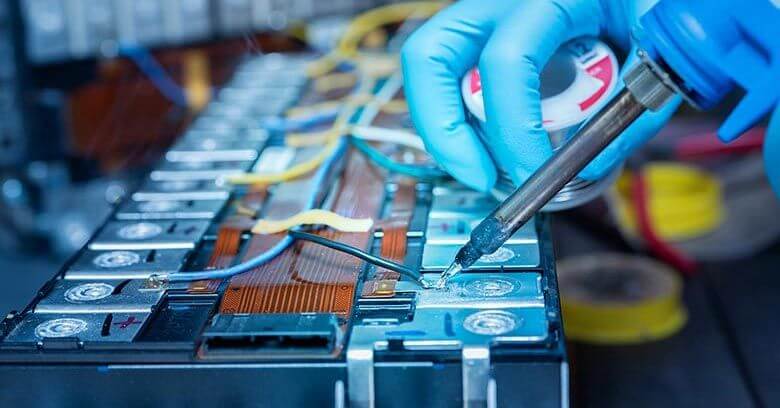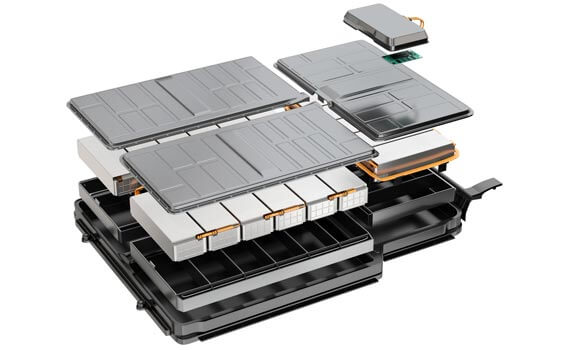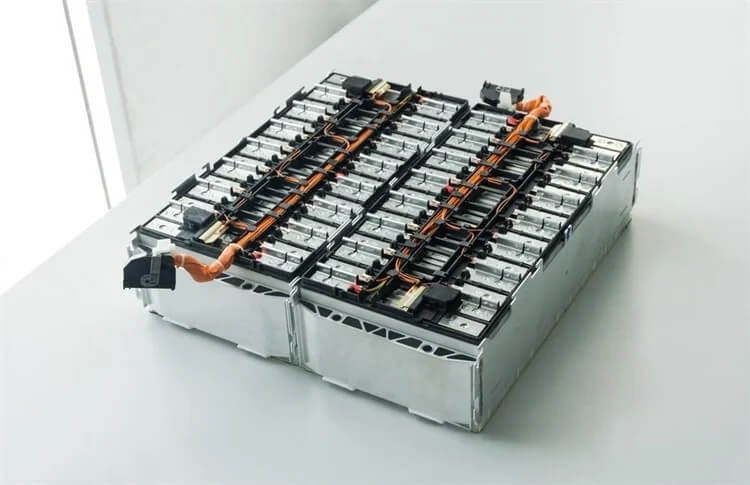The risk of an accident using lithium-ion batteries has decreased dramatically as the technology has developed.
There are still many causes of problems.
Therefore, many are interested in learning how to spot a bad lithium-ion battery.
There are a wide variety of symptoms that may be present, including reduced capacity, low voltage, a high rate of self-discharge, overheating, and swelling.
In this article, we'll discuss how to check for battery failure in lithium-ion devices.
Come on, let's get moving.

Lithium-ion batteries can be broken down into six main categories. The cycle life or shelf life of each of these batteries varies. Knowing this in advance can allow you to determine whether or not a lithium-ion battery is defective:
1. Lithium cobalt oxide, found in electronics like mobile phones and computers, has a lifespan of two to three years.
2. Medical equipment that contains lithium manganese oxide typically lasts between 10 and 20 years.
3. Battery life for electric motorcycles powered by lithium iron phosphate (LFP) can exceed 12 years.
4. The fourth type of battery is lithium nickel manganese cobalt oxide (NMC), which is used mostly in long-lasting electric vehicles (up to ten years).
5. The fifth component, lithium nickel cobalt aluminum oxide, is used in EVs and has a lifespan of five years or more.
6. There are electric buses, solar energy, and even military uses for lithium titanate. The lifespan of this battery is at least 30 years.
Even though your lithium-ion battery is robust and protected by the BMS, it is still vulnerable to harm from a variety of internal and external sources, including:
Factors inside the company itself, such as price gouging, subpar materials, and sloppy production.
Temperature, humidity, air pressure, and mechanical stress or impact are all examples of environmental influences.
You know that lithium-ion batteries don't last forever if you've ever had a smartphone, laptop, or any other gadget that uses one. A lithium-ion battery may begin to degrade as early as a few years after purchase. The question then becomes, how can you know if your battery is failing? Seven indicators are listed below.
Slower charging times are an indication that your battery is losing capacity and will not retain a charge for as long as it once did. It's one of the earliest warnings that your lithium ion battery is failing. Lithium ion batteries gradually lose their capacity to store energy and their efficiency at turning energy into usable form as they age.
Because of this, your gadget may take longer to charge and may not be as powerful as it once was. If you experience this issue, it's advisable to have a technician repair or replace your equipment. If you don't, your lithium-ion battery could die sooner than you'd want.
One of the worst things that may happen to your phone is that you go to use it after it has been charging for a while, only to find that the lithium-ion battery has died. If this sounds familiar, it's probably because the battery in your phone isn't performing as well as it once did and needs to be recharged more frequently.
This is a common problem with aging Lithium Ion batteries and may indicate that a new battery should be installed. A new lithium-ion battery can give your phone a much-needed boost and help it last for another year or two if you're not quite ready to replace the whole thing. A new battery may be all that's needed if your phone isn't keeping a charge as it once did.

Overheating and subsequent fire is a risk associated with lithium ion batteries. When the gadget heats up too much when charging, it's a symptom that the lithium-ion battery is failing and has to be replaced.
A dead battery is one of the most inconvenient problems that can arise for anyone who routinely uses a portable electronic device. When your gadget simply won't charge, the situation becomes even more infuriating. If this is occurring, it is likely indicative of a dying battery that needs to be replaced.
Although this is often the only option to get your gadget back up and running, it may be a time-consuming and expensive process. Take it to a professional if you aren't confident in your ability to replace the battery. When a device stops charging, a new battery is usually the best remedy.
When an electronic device suddenly shuts off, especially when there is plenty of lithium-ion battery life left, it can be extremely frustrating. In many cases, this indicates that the lithium-ion battery is failing. If this keeps happening, it's probably time to have the battery replaced by a pro.
DIY attempts are not only dangerous but often nullify manufacturer warranties. Furthermore, if the issue is caused by something other than the battery, such as a malfunctioning charger, changing the battery will not solve the problem. A trained expert can assess the situation and recommend a workable solution.
Despite the fact that the device's lithium-ion battery life meter shows that there is plenty of power left, many of us have experienced the frustration of having our devices suddenly expire on us. This is typically an indication that the battery is failing and needs to be replaced.
It may also indicate that the battery indicator is not reliable. Get a new battery if your smartphone consistently dies before the lithium-ion battery indication says it should. If you don't have a backup charger, you can waste a lot of time looking for one when your phone dies at the worst possible times.
There are a few possible causes for the poor response time of your device. The lithium-ion battery in your device may be failing. When batteries get old, they lose their capacity to store energy, therefore they don't perform as well.
It's also possible that your gadget is stuffed to the gills with data and applications. When there are too many processes vying for the computer's resources, performance may suffer. Last but not least, there could be a problem with the program itself.
Your device's unusual behavior may be the result of recent updates or adjustments. Restarting your device or calling customer support are good places to start if you can't figure out what's wrong.
These are all warning indicators that indicate it's time to start looking for a new lithium battery. It's important to be diligent about replacing these batteries because they don't last forever. If you wait too long, your gadget could catch fire.
Make sure you choose a lithium-ion battery that works with your gadget when you need to replace it. Putting an unsuitable battery in your gadget increases the risk of it malfunctioning or even catching fire.
Over time, the voltage in any battery will gradually decrease.
When a certain voltage is detected, the cutoff circuit will disconnect it immediately.
A 4.2V lithium-ion battery, for example, may change to a 3.7V state after being charged and discharged several times.
Once the battery voltage drops below 3.4V, you will notice that the device is no longer functioning.
Also, once it reaches 3.0V, it's pretty much toast.
If you need to swiftly assess the state of things, a multimeter is your best bet.

Like I said before, I have to tell you that batteries eventually die on their own.
That is to say, the battery's charge is automatically lowered whenever it is not being utilized to power a device.
High-quality lithium-ion batteries often have a low rate of self-discharge.
The battery should be removed after two hours.
Make sure the charge is still good before you unplug it.
If the readings are higher than the specified range, you should assume it is broken.
An overinflated lithium-ion battery is the last symptom of a failing battery.
The scary truth is that you won't know until it's too late.
Since we tend to forget about the condition of batteries once they have been installed, we do not perform routine visual checks.
Because of the high temperature and energy output, batteries may expand.
Substitute the new knowledge for the old one as soon as possible.
How Do You Test A Lithium-Ion Battery?
Using a multimeter does not require any special technical knowledge.
Anyone may do a home test on a lithium-ion battery.
Here are the measures to take.
Step 1, turn on the meter while holding the voltage-measuring knob in its central position; the resulting reading should include a decimal point.
Step 2: Connect the meter's red probe to the positive side of the battery (the side with the bumps) and read the results.
Step 3: Next, fasten the black probe to the flat, negative side.
The voltage reading is shown for your perusal.
Astute observers may note that inverting the link still yields a reading, albeit a negative one.
Step 4: set the desired reading by turning the knob to the appropriate position.
Your lithium-ion battery needs to be tested immediately if you suspect it is malfunctioning. Any number of issues, including fires, can be brought on by a defective battery.
Lithium-ion batteries are best tested with a multimeter. However, multimeters cannot be used to check a lithium ion battery pack. To do so, you must first remove the battery from its case and then connect the multimeter's positive and negative leads to the battery's respective terminals.
After the leads have been connected, the multimeter should be powered on and the "DC Voltage" preset activated. Then, place the probes on the terminals of the lithium-ion battery and read the results.
When a battery is destroyed, its voltage drops below its normal operating level. A damaged lithium-ion battery may show a voltage of 3.5 volts or less, for instance, if the original battery was rated at 3.7 volts.
The battery's capacity should also be examined. Discharging the battery to zero and taking a new reading will accomplish this. A damaged battery will have less power than a good one.
It is critical to replace your lithium ion lithium-ion battery as soon as possible if you suspect damage. It's not worth taking any chances by continuing to use a damaged battery.
1. Charge with a high-quality charger; a low-quality charger can reduce the useful life of your lithium-ion batteries. Always use a high-quality charger that is made specifically for lithium-ion batteries.
2. Don't overcharge them; doing so can limit their useful life and cause harm. Never leave them charging overnight unless absolutely necessary.
3. Third, don't over-discharge; doing so can harm your batteries and reduce their useful life. If at all feasible, you should aim to keep them over 50% and definitely not below 0%.
4. Batteries can be kept for a longer period of time if they are kept in a cool, dry environment. Lithium-ion battery cells can be damaged by exposure to extreme temperatures and moisture.
5. Use good batteries If you want your lithium ion rechargeable batteries to last as long as possible, you need to use good batteries. Cheap imitations of popular brands should be avoided because of the risk of damage to your equipment they pose. Use only trusted, well-known manufacturers of high-quality batteries.
All lithium ion batteries have a finite lifespan. However, there are measures you may do to keep your battery from dying too quickly. Some advice is as follows:
Keep out of the heat and cold. The life of your Li-ion battery might be shortened by extreme heat or cold.
Maintain a full battery. A fully charged battery will survive much longer than one that is always close to dying.
Make frequent use of your battery. Infrequently used batteries have a shorter lifespan than their more frequently used counterparts.
Keep your batteries in a cool, dry place. Lithium-ion batteries should be kept in a cool, dry place when not in use.
The battery shouldn't be overcharged. Overcharging a battery can cause it to malfunction and reduce its useful life.
If you stick to these guidelines, you can get more use out of your Li-ion batteries.
.jpg)
A lithium battery can be rapidly checked with a multimeter.
How to do so has been described in full up to this point.
A dead lithium-ion battery can be revived using a USB connection.
To expose the wires, sever the male end of the cord.
Locate the dead battery's positive and negative terminals, and connect the appropriate wires to them before inserting the battery into a computer.
If you do it enough times, your dead Li-ion battery will start working again.
There is a solution for a lithium battery that won't charge.
Empty it completely.
Trying to turn it on until the battery dies is a surefire way to verify if it has no juice left.
After that, charge the lithium-ion battery for at least two days.
If a lithium-ion battery is discharged or left within a device, it will eventually malfunction.
However, it won't spoil for a long period provided proper storage conditions are maintained.
A defective or broken lithium-ion battery can be fixed. However, this is conditional, so it depends on what kind of warning signs you're seeing.
You can't fix a battery that gives off a high-level or scary signal. A trip to the nearest battery station is your best bet. They will provide assistance in getting it to a recycling center.
If a lithium-ion battery is showing just mild signs of distress, it can be fixed. Either you or a battery expert can perform it.
1. Diagnosis is the first order of business. This requires checking how much the battery's parts have degraded. Common culprits include BMS and prismatic lithium ion battery cells.
2. Power must be applied across the prismatic cells in order to determine if one or more cells is under performing in terms of voltage and capacity. That or those cells has to be replaced.
3. Third, the BMS will be subjected to a power load and charging current in order to detect any potential malfunctions. If the BMS is broken, the batteries can't be balanced out. It needs to be replaced if there are any problems.
4. Your battery's performance should improve once the faulty part is replaced. The expert will conduct a battery of tests to ensure its condition before returning it to you.
Lithium-ion batteries can withstand lengthy periods of inactivity without suffering damage. Their monthly self-discharge rate is typically between 2% and 3%.
Over-discharge, which can permanently degrade the performance of a lithium-ion battery, is the main issue with extended inactivity. Consequently, there exist optimal methods for storing a lithium-ion battery or a device powered by one:
Before putting your battery away, a complete charge is recommended by some manufacturers.
Some people think a 40% charge level is sufficient.
The battery should be completely uncharged.
Keep in a dry, cool (70 degrees is ideal) area.
Over discharging is a long-term effect of improperly storing lithium-ion batteries. The BMS is probably dormant and needs to be awakened.
The battery voltage must be over 6V for a 12V battery or 12V for a 24V battery for this method to operate. These low-voltage batteries have intrinsic short circuits that will be triggered by any attempt to reset them.
If the voltage gets too high, though, the BMS will turn off the battery. To wake up a dormant BMS, you'll need a lithium battery charger with a "boost" option.
Be careful to observe the correct polarity while connecting the charger to the lithium-ion battery. Therefore, ++ should be used with other ++s, and - other -s.
At least two to three years of use is possible for any lithium-ion battery.
Meaning even the tiniest lithium-ion battery can survive 300–500 charge cycles.
Lithium batteries are particularly vulnerable to overheating or being subjected to extremely low or high temperatures.
Overcharging and battery casing cracks are additional causes of battery failure.
Most lithium batteries won't suddenly stop working.
But if it's not used for a while, it could abruptly stop holding data.
Power tools, laptops, and cellphones all use batteries that run on lithium ions. The convenience of these rechargeable lithium-ion batteries and their light weight make them appealing, but they don't last forever. A lithium-ion battery may begin to degrade as early as a few years after purchase. The question then becomes, how can you know if your battery is failing? If you want to know if your lithium-ion battery is faulty, here are seven warning signals. Any of these problems indicate that you need to start looking for a new battery for your device.

扫码关注
We use cookies to understand how our audience uses our site.
Renon Power websites use cookies to deliver and improve the website experience. See our cookie policy for further details on how we use cookies. Privacy Policy